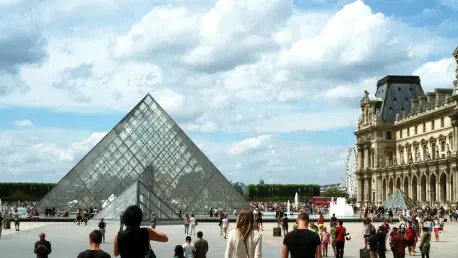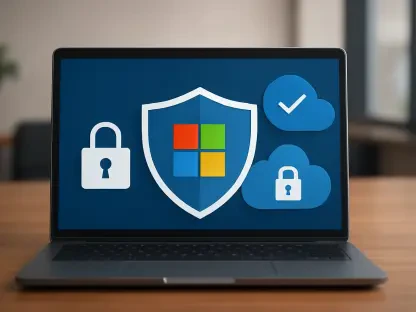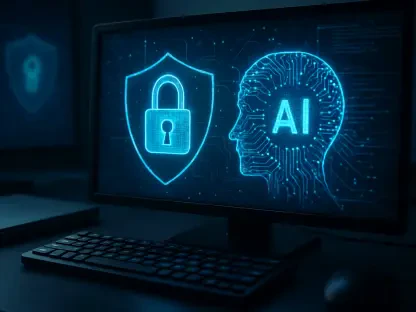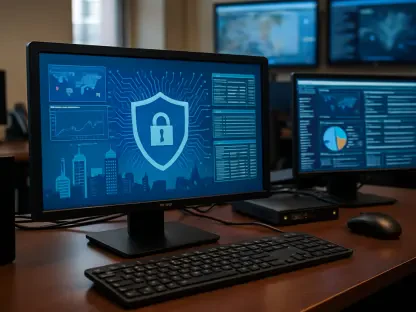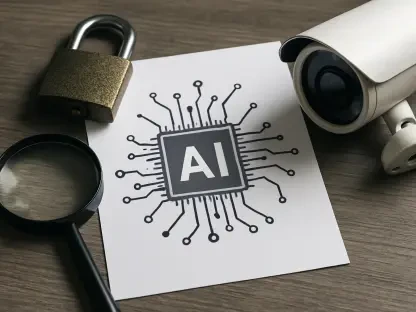In an era where cyber threats loom larger than ever, consider a scenario where one of the world’s most iconic cultural institutions, the Louvre Museum, becomes a prime target for digital intruders. Housing priceless artifacts like the Mona Lisa, the Louvre is not just a repository of art but also a treasure trove of sensitive data and operational systems that must be protected at all costs. Yet, audits have exposed glaring vulnerabilities in its cybersecurity framework, raising urgent questions about how such a prestigious entity could falter on basic protections. This review delves into the technology behind the Louvre’s cybersecurity defenses, dissecting its weaknesses and evaluating its performance against modern standards, while drawing parallels to broader digital security challenges.
Overview of Cybersecurity Infrastructure at the Louvre
The Louvre Museum, located in Paris, stands as a global symbol of cultural heritage, attracting millions of visitors annually. Beyond its physical treasures, the museum relies on an extensive digital infrastructure to manage operations, from video surveillance to access control systems. Protecting these systems is paramount, as a breach could disrupt operations or compromise sensitive information about staff, visitors, or assets. However, the importance of robust cybersecurity appears to have been underestimated, leaving the institution exposed to significant risks.
Recent security audits, spanning over a decade, have painted a troubling picture of the Louvre’s technological defenses. Reports from investigative sources have highlighted fundamental flaws in password management and outdated software, issues that should have been addressed long ago. These findings underscore a critical disconnect between the museum’s global stature and the state of its cybersecurity, prompting a deeper examination of the systems in place.
This review focuses on the specific technologies employed by the Louvre, assessing their features, vulnerabilities, and overall effectiveness. By analyzing these elements, a clearer understanding emerges of how such lapses occurred and what they mean for an institution tasked with safeguarding irreplaceable heritage. The discussion also situates these shortcomings within the larger context of cybersecurity challenges faced by similar organizations worldwide.
Detailed Analysis of Cybersecurity Features and Performance
Password Management Systems: A Fundamental Flaw
At the core of the Louvre’s cybersecurity infrastructure lies a password management system that has proven alarmingly inadequate. Audits revealed the use of simplistic and easily guessable passwords, such as the museum’s own name for video surveillance servers and the name of a software vendor for related platforms. Such practices are a stark violation of basic security protocols, leaving critical systems open to unauthorized access with minimal effort.
The performance of this password system was tested through penetration exercises, where auditors gained entry to sensitive areas, including those controlling access badges. This ease of breach points to a severe lack of complexity and enforcement in credential policies, a cornerstone of digital security. For an institution of this caliber, the absence of strong, unique passwords across systems is not just a technical oversight but a systemic failure in prioritizing cybersecurity.
Beyond the immediate vulnerabilities, this issue reflects a broader neglect of user education and policy enforcement. Without stringent guidelines or regular updates to credentials, the Louvre’s password management remains a weak link, incapable of withstanding even rudimentary cyberattacks. This flaw demands urgent attention to prevent potential exploitation by malicious actors seeking to disrupt or steal from the museum.
Operating Systems and Software: Outdated and Unsupported
Another critical component of the Louvre’s cybersecurity framework is its reliance on operating systems and software that are long past their prime. Systems running on Windows 2000, Windows XP, and Windows Server 2003 have been identified within the museum’s network, despite these platforms being unsupported by their developer for years. This outdated technology lacks security patches, rendering it highly susceptible to known exploits and modern malware.
The performance of these obsolete systems is predictably poor when measured against current cybersecurity threats. Without updates to address emerging vulnerabilities, the Louvre’s infrastructure is akin to a fortress with crumbling walls, offering little resistance to determined attackers. The risk is not merely theoretical; unpatched systems are frequent targets for cybercriminals who exploit well-documented weaknesses to gain entry.
This technological lag also hampers operational efficiency, as older systems struggle to integrate with modern security tools that could enhance protection. The persistence of such outdated software suggests either resource constraints or a lack of strategic planning in IT upgrades. Addressing this issue is not optional but essential to align the museum’s defenses with contemporary standards and mitigate the ever-growing spectrum of digital threats.
Integration and Response Mechanisms: Gaps in Coordination
Examining the integration of the Louvre’s cybersecurity systems reveals further deficiencies in how these technologies interact. There appears to be minimal coordination between different security components, such as surveillance and access control, leading to fragmented defenses. A breach in one area, facilitated by weak passwords or outdated software, could cascade across the network without robust mechanisms to detect or halt the intrusion.
The response capabilities of the museum’s cybersecurity setup also fall short of expectations. Audits indicate a lack of proactive monitoring or rapid incident response protocols, meaning that breaches might go unnoticed for extended periods. This sluggishness in identifying and addressing threats amplifies the potential damage, whether it involves data theft or operational sabotage.
Such gaps in integration and response highlight a broader failure to adopt a holistic approach to cybersecurity. Modern threats require layered defenses and real-time adaptability, elements that seem absent from the Louvre’s current technological framework. Strengthening these aspects is crucial to ensure that individual weaknesses do not compromise the entire system, leaving the museum’s digital and physical assets at risk.
Broader Implications and Comparative Performance
The cybersecurity challenges at the Louvre are not isolated but mirror widespread issues across public and private sectors. Comparing the museum’s systems to those of other institutions reveals a recurring pattern of negligence, where basic security practices are overlooked until a crisis emerges. For instance, government entities in various countries have faced similar criticism for outdated infrastructure, underscoring a global lag in prioritizing digital defenses.
Emerging trends in cyber threats, such as persistent attacks on unpatched systems, further expose the inadequacies of the Louvre’s technology. The museum’s performance pales in comparison to organizations that have invested in modernizing their IT environments and enforcing strict security policies. These comparisons suggest that the Louvre’s current systems are ill-equipped to handle sophisticated attacks that exploit known vulnerabilities.
Additionally, the interconnected nature of cyber risks means that a breach at the Louvre could have ripple effects, potentially compromising data shared with partners or affecting public trust in cultural institutions. This broader perspective emphasizes the urgency of aligning the museum’s cybersecurity with best practices, not just for its own protection but to uphold confidence in the sector as a whole.
Verdict on Louvre’s Cybersecurity Systems
Reflecting on this evaluation, the cybersecurity systems at the Louvre Museum were found to be deeply flawed, marked by elementary lapses in password management and a troubling dependence on obsolete technology. The integration and response mechanisms also lagged, failing to provide a cohesive defense against potential threats. These shortcomings stood out as significant barriers to securing both digital and physical assets.
Looking ahead, actionable steps emerged as critical to reversing these deficiencies. Implementing robust password policies with mandatory complexity and regular updates was identified as an immediate priority. Equally important was the need to phase out unsupported operating systems, replacing them with modern, secure alternatives over the next few years.
Further considerations included fostering a culture of cybersecurity awareness among staff and investing in integrated systems for real-time threat detection. Collaboration with international cybersecurity experts and adopting stricter regulatory guidelines also surfaced as vital pathways to bolster defenses. These measures, if pursued diligently, hold the promise of transforming the Louvre’s technological landscape into a model of resilience and trust.
